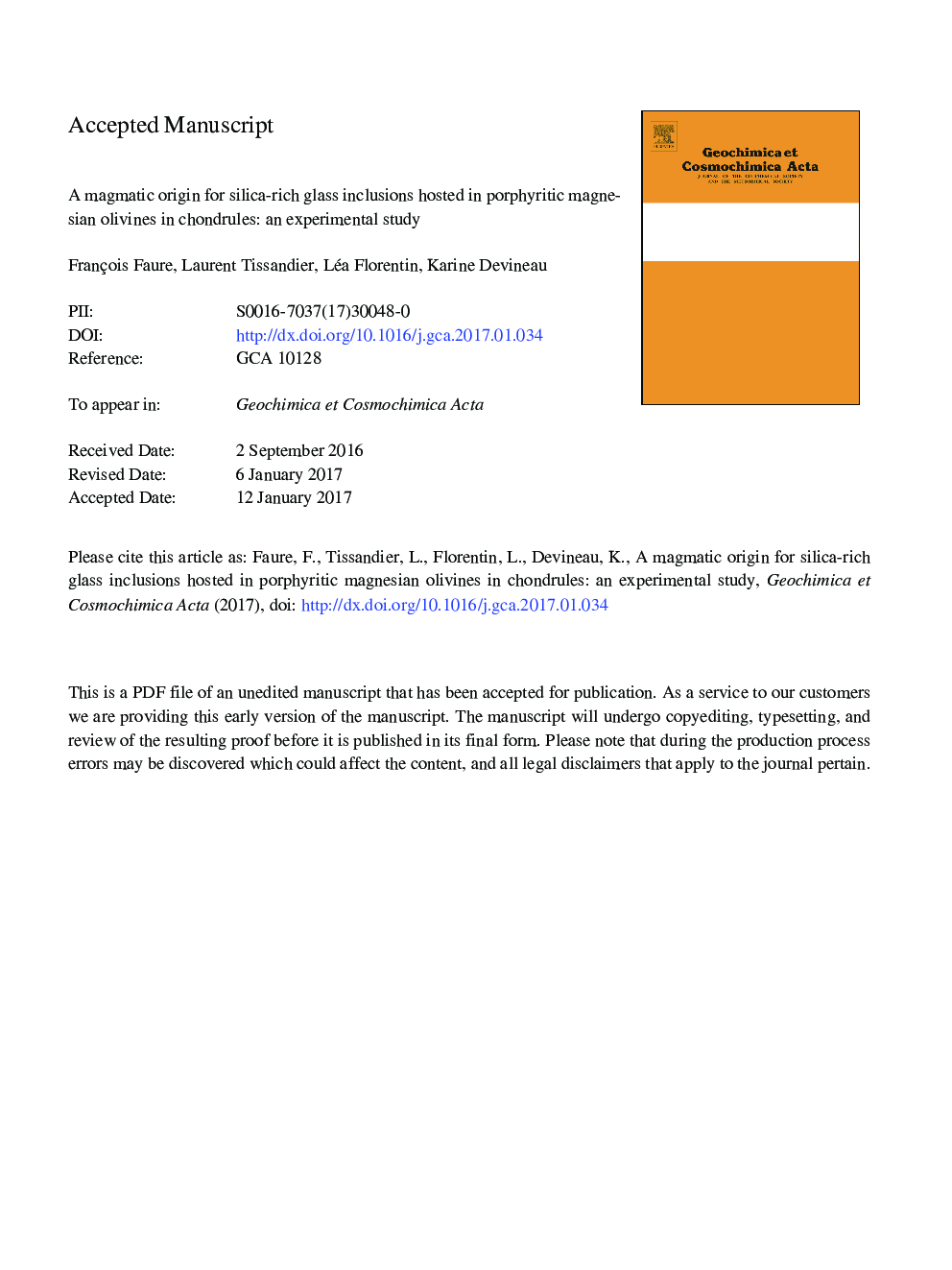| Article ID | Journal | Published Year | Pages | File Type |
|---|---|---|---|---|
| 5783536 | Geochimica et Cosmochimica Acta | 2017 | 38 Pages |
Abstract
Rare silica-rich glass inclusions (69Â <Â SiO2Â <Â 82Â wt.%) are described within magnesian olivines of porphyritic Type IA chondrules. These glass inclusion compositions are clearly out of equilibrium with their host Mg-olivines and their presence within the olivines is generally attributed to an unclear secondary process such as a late interaction with nebular gases. We performed dynamic crystallisation experiments that demonstrate that these Si-rich glass inclusions are actually magmatic in origin and were trapped inside olivines that crystallized slowly from a magma with a CI, i.e. solar, composition. Their silica-rich compositions are the consequence of the small volumes of inclusions, which inhibit the nucleation of secondary crystalline phase (Ca-poor pyroxene) but allow olivine to continue to crystallize metastably on the walls of the inclusions. We suggest that Si-rich glass inclusions could be the only reliable relicts of what were the first magmas of the solar system, exhibiting a CI, i.e. non-fractionated, composition.
Keywords
Related Topics
Physical Sciences and Engineering
Earth and Planetary Sciences
Geochemistry and Petrology
Authors
François Faure, Laurent Tissandier, Léa Florentin, Karine Devineau,
